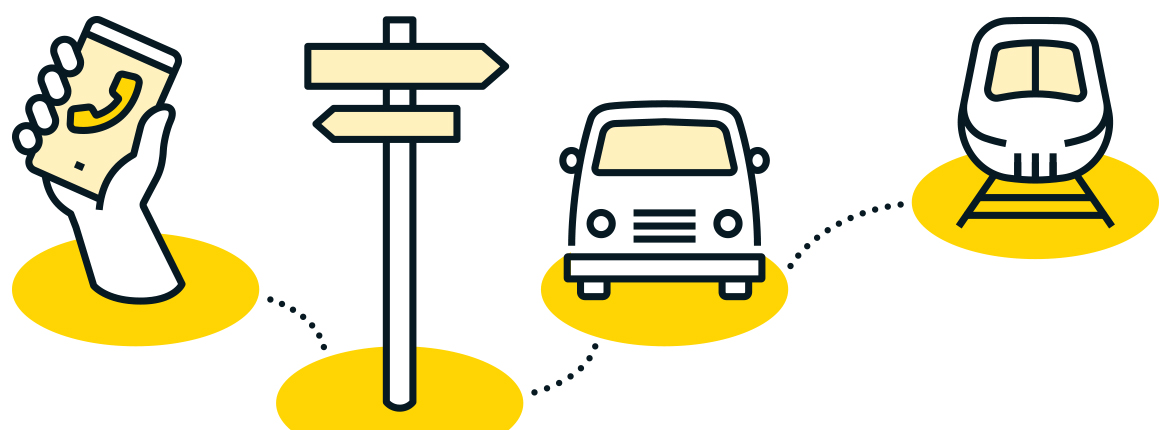“I’d love to use public transport, but it’s just not a realistic option where I live.”
That’s a common refrain from AA Members in our main centres. It reflects the challenge faced by public transport (PT) operators, not just in New Zealand, but around the world. In spread-out urban environments, providing services that can compete with the car for flexibility and convenience is difficult and costly.
All too often, the result is services that don’t get used, or no services at all.
Now, though, technology is giving transport operators another tool for the toolbox. It’s called on-demand transport (or microtransit), and cities around the world – including in New Zealand – are using it to complement or substitute parts of the PT network.
Basically, it’s a cross between ride-hailing services (like Uber) and the traditional bus.
Users of the service request a ride via a smart phone app. They then walk to a nearby corner (known as a virtual bus stop), where they are collected by a vehicle that in most cases is a van, but could also be a car or small bus. Together with other passengers, the van shuttles them to a corner close to their destination.
The system relies on pick-up and drop-off points being a short walking distance from requested locations, and relatively short waiting times (typically 10-15 minutes in a smaller city). This ensures the service offers a competitive alternative to the private car.
All of this is made possible by a powerful algorithm sitting in the background, which assesses all incoming ride requests and quickly works out the most efficient routes that vans can follow to pick up passengers who are heading in the same direction.
Sometimes the goal is to replace an existing service with something more personalised to increase ridership; other times it’s about providing a service where previously there was none – a service that people will actually want to use. Often, on-demand transport is used to complement existing PT infrastructure – for instance, by connecting people’s homes with rail and bus stations.
When it’s done right, there are obvious benefits. For passengers, greater convenience and flexibility mean a better user experience. For cities, large-scale on-demand transport can help to reduce transport costs, ease congestion and reduce CO2 emissions.
A number of companies around the world provide the tech behind on-demand transport, but the largest is Via, a US-based company. Via has partnered with transport operators in nearly 100 cities across five continents, with the largest scheme in Berlin, where 130 vans pick up and drop off passengers at 5,000 virtual bus stops.
Recently, Environment Canterbury teamed up with Via to launch MyWay, a 12-month on-demand transport trial in Tīmaru. MyWay has replaced three of the city’s four fixed PT routes (all three routes were poorly patronised); Environment Canterbury transport advisor Isabelle Bromham says the results so far are promising.
“People in Tīmaru have really come on board,” she says. “Patronage is up by 40% on the same time last year, when compared to the routes MyWay has replaced, and the exciting thing is that around one-third of these passengers are new to public transport. Users are finding that they’re able to get to the places they need to go in Tīmaru in a way they couldn’t before.
“It’s early days yet, but we’re confident that MyWay is going to generate lasting benefits for Tīmaru’s transport network.”
Via also provided the technology behind AT Local, an on-demand trial set up by Auckland Transport in 2018 to connect residents in the suburb of Devonport with the local ferry terminal. Via is exploring opportunities with other transport providers around the country.
What’s the AA’s view?
On-demand transport is an example of a PT system that is able to adjust to meet the needs of its users, rather than forcing users to fit in with what the system can provide; that’s exactly what the AA wants to see. In their use of the transport network, people mix and match based on what works for them. It should be no different with the solutions that transport planners design for our cities. Sometimes the best approach is a hybrid one.
AA Members receive two free rides on the MyWay service, with the offer available for new MyWay customers until 30 Nov, 2020.
Use the promo code: MYWAYAA on the MyWay app.
Reported by Barney Irvine for our AA Directions Spring 2020 issue




